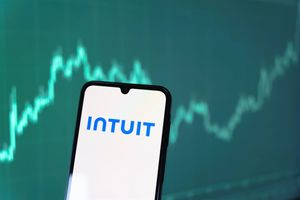
Gold prices have shattered all previous records in 2025, with spot gold reaching unprecedented highs of approximately $3,728 to $3,731 per troy ounce as of September 22, 2025. This historic surge marks one of the most significant bull markets in modern gold trading history, demonstrating remarkable strength and resilience, gaining over 40% year-to-date and extending its gains for six consecutive weeks. This monumental rally is far more than a fleeting market anomaly; it signals a profound shift in global financial perceptions and investor strategies, with analysts projecting further upside, potentially reaching $4,000 per ounce by mid-2026, and even as high as $5,000.
The immediate implications for global financial markets are multifaceted and significant. Gold's traditional role as a safe haven asset has been dramatically amplified, with investors increasingly seeking refuge amidst a landscape fraught with geopolitical turmoil and economic uncertainty. Concurrently, central banks, especially those in emerging markets, are aggressively diversifying their reserves away from the US dollar, bolstering gold's demand. The rally also highlights a structural shift in how gold is perceived, transforming it from a mere cyclical safe-haven asset into a fundamental component of geopolitical and financial resilience and a core monetary reserve within modern portfolios. This bullish sentiment has also spilled over into other precious metals, with silver prices similarly skyrocketing to all-time highs.
The Golden Tide: What Happened and Why It Matters
The ascent of gold to record highs is not an isolated event but the culmination of several powerful, interconnected forces converging on the global stage. This unprecedented rally, pushing gold to new peaks, underscores a fundamental re-evaluation of risk and value in the international financial system.
Specifically, the rally saw gold prices consistently breaking through resistance levels throughout 2025, culminating in the current astonishing figures. The timeline of this ascent is marked by a series of catalysts: persistent inflationary pressures, central bank monetary policy shifts – particularly the Federal Reserve's recent 25-basis-point rate cut and expectations of further reductions – and a dramatic increase in geopolitical instability across Eastern Europe, Asia, and the Middle East. Key players involved are not just individual and institutional investors but also major central banks globally, whose strategic acquisitions have provided a robust floor and sustained upward pressure on prices. Initial market reactions have been varied; while gold-backed Exchange-Traded Funds (ETFs) have seen substantial inflows, indicating increased institutional interest, paradoxically, consumer demand for gold jewelry in major markets like China and India has seen a decline due to prohibitively high costs. This indicates a strong investment-driven rally rather than a consumer-led one.
The primary factors driving this rally can be broken down into three critical pillars. Firstly, global economic uncertainty has been a pervasive theme. Fears of recession, banking crises, and slowing global growth, compounded by weak labor market data and bond market volatility, have historically driven investors towards gold as a reliable store of value during turbulent times. Secondly, persistent inflation concerns continue to plague major economies, with inflation rates remaining stubbornly above central bank targets. Gold acts as a powerful hedge against the erosion of purchasing power, particularly when real yields on traditional assets become negative. Lastly, interest rate expectations and monetary policy shifts have been a primary catalyst. Anticipated monetary easing by major central banks, especially the Federal Reserve, diminishes the opportunity cost of holding non-yielding gold, making it a more attractive investment. Lower interest rates also typically weaken the US dollar, making gold cheaper for international buyers and further fueling demand. These factors, combined with aggressive central bank acquisitions seeking to diversify reserves and heightened geopolitical tensions, have created a perfect storm for gold's record-breaking ascent.
The Golden Divide: Winners and Losers in a Bull Market
Gold's record-breaking rally has created a clear divide in the market, producing significant beneficiaries and those facing substantial headwinds. The impact on public companies is profound, reshaping profitability, investment strategies, and stock performance across various sectors.
The most evident winners in this golden era are the gold mining companies. These firms benefit immensely from "operational leverage," where their costs of extraction tend to increase at a slower rate than the surging price of gold, leading to significantly wider profit margins. Companies like Alamos Gold (NYSE: AGI), Northern Star Resources (ASX: NST), Regis Resources (ASX: RRL), Evolution Mining (ASX: EVN), Agnico Eagle Mines (NYSE: AEM), Kinross Gold (NYSE: KGC), Barrick Gold (NYSE: GOLD), and Newmont (NYSE: NEM) are experiencing unprecedented cash flows. For instance, Alamos Gold reported a 47% year-on-year increase in Q4 operating revenues, while Kinross Gold saw revenue jump 42% year-over-year, with both exceeding earnings projections. This surge in profitability empowers miners to reduce debt, invest in exploration, and enhance shareholder returns through buybacks or dividends. While some production costs like royalties may increase with gold prices, the overall trend points to substantial profit expansion. Gold mining ETFs, such as the VanEck Gold Miners ETF (NYSE Arca: GDX), have seen year-to-date returns ranging from 85% to 102%, significantly outperforming physical gold.
Conversely, the jewelry industry finds itself in a challenging position. Gold, being their primary raw material, sees its cost skyrocket with the rally, squeezing profit margins dramatically. Companies like Senco Gold (NSE: SENCO), Kalyan Jewellers India (NSE: KALYAN), and Titan Company (NSE: TITAN) have seen their stock prices close lower following recent gold surges. Jewelers struggle to pass on these increased costs to consumers, leading to decreased sales volumes, particularly for plain gold jewelry, as consumers either delay purchases or seek cheaper alternatives like palladium, titanium, or vermeil. Demand for gold jewelry fell 14% in Q2 2025, reaching its lowest point since Q3 2020. Many jewelers are forced to adapt by narrowing their margins, raising prices, or shifting their product focus towards gemstone-heavy designs or alternative metals to mitigate the impact of soaring gold prices.
Financial institutions present a mixed but generally positive outlook. Those involved in offering gold-backed Exchange Traded Funds (ETFs) and other gold-related investment products, such as BlackRock (NYSE: BLK) or State Street Global Advisors (NYSE: STT), are witnessing increased inflows and demand, benefiting from the heightened investor interest. Major banks like UBS (NYSE: UBS) and Deutsche Bank (NYSE: DB) have also revised their gold price forecasts upwards, reflecting expectations of continued strong performance, which fuels trading and hedging activities. Lower interest rates also reduce the opportunity cost of holding non-yielding gold, further boosting investment demand and benefiting institutions that facilitate these investments. Currency impacts also play a crucial role: a weaker US dollar makes gold more affordable for international buyers, which generally benefits miners whose costs are in local currencies. However, for jewelers, a strong US dollar combined with high gold prices can create a "triple whammy," making imports more expensive and reducing international demand.
Broader Horizons: Industry Impact and Global Implications
Gold's unprecedented rally in 2025 is more than a simple price movement; it is a profound indicator of a shifting global economic and geopolitical landscape, sending ripple effects across industries and prompting re-evaluations of policy and strategy.
This historic surge fits squarely into broader trends characterized by persistent global economic uncertainty, inflationary pressures, and a notable weakening of the U.S. dollar coupled with expectations of interest rate cuts. Gold's traditional role as a safe-haven asset is being heavily reinforced as investors seek refuge from volatile equity and bond markets. The aggressive accumulation of gold by central banks, particularly in emerging economies like China and India, represents a structural shift in global reserve management. Driven by a desire to diversify away from the U.S. dollar and hedge against currency devaluation and geopolitical risks, this trend, which has seen over 1,000 tonnes purchased annually since 2022, signals deep-seated concerns about the stability of the international monetary system. This institutional buying provides a robust, long-term demand floor for gold, distinguishing the current rally from speculative surges of the past.
The ripple effects extend far and wide. For competitors, particularly other safe-haven assets or commodities, gold's ascendance can draw capital away, though the bullish sentiment has also spilled over into other precious metals like silver. Partners within the gold supply chain, from refiners to logistics providers, are likely seeing increased activity. However, the most significant impact is on the broader monetary system. The deliberate diversification away from the dollar by central banks carries significant regulatory and policy implications, potentially lessening the dollar's global dominance over the long term. This strategic pivot by nations is a direct response to geopolitical tensions, such as the freezing of Russian foreign currency reserves in 2022, underscoring a global move towards greater monetary sovereignty. Regulatory actions, such as the brief U.S. government reclassification of gold bars that created market disruption, highlight the sensitivity of the market to policy changes.
Historically, gold has consistently demonstrated its resilience during periods of major economic and geopolitical instability. During the 2008 financial crisis, gold prices rose by approximately 25% while stock markets plummeted. Similarly, it rebounded strongly after the COVID-19 market crash in March 2020 to reach new highs. Comparisons are also drawn to the stagflationary environment of the 1970s and the dramatic gold market of 1980, where gold served as a crucial hedge against rampant inflation and currency debasement. The current rally also marks a stark reversal from decades of central banks being net sellers of gold, a trend that fundamentally shifted after the 2008 crisis and accelerated dramatically following the 2022 geopolitical events. This historical context underscores gold's enduring value as a barometer of global risk and a critical component of financial resilience in uncertain times.
The Road Ahead: What Comes Next for the Golden Market
Gold's record-breaking rally has set the stage for a transformative period, presenting both unprecedented opportunities and significant challenges across the precious metals landscape and beyond. The future trajectory of gold prices will largely hinge on the ongoing interplay of global macroeconomic factors, geopolitical developments, and central bank policies.
In the short-term (2025-2026), analysts largely anticipate continued bullish momentum for gold, albeit with expected periods of volatility and profit-taking. Many experts project gold prices to stabilize between $3,800 and $4,000 per ounce by the end of 2025, with potential to breach the $4,000 mark by mid-2026 if current tailwinds persist. Key drivers will remain the sustained demand from central banks, particularly those in emerging markets like China and India, which are expected to continue diversifying their reserves away from the U.S. dollar. Ongoing geopolitical tensions in Eastern Europe and the Middle East will continue to fuel safe-haven demand. Crucially, the Federal Reserve's interest rate policy will play a pivotal role; further rate cuts would reduce the opportunity cost of holding non-yielding gold, while a weaker U.S. dollar would make gold more affordable internationally. Investor flows into gold-backed ETFs and physical gold are also expected to remain strong as a hedge against inflation and economic uncertainty.
The long-term (2027-2030 and beyond) outlook for gold is generally bullish, with some institutions forecasting structurally higher prices, potentially reaching $4,800-$5,455 by 2030, and even $10,000 by 2035 under extreme market conditions. This long-term view is supported by the expectation of continued structural central bank buying, a persistent decline in confidence in fiat currencies due to concerns about debasement and geopolitical fragmentation, and potential supply constraints as new gold discoveries become scarcer and production costs rise. The "peak gold" theory, suggesting that global gold production may have already peaked or will soon, also lends support to higher long-term prices by limiting future supply.
Strategic pivots and adaptations will be crucial for companies in related industries. Gold mining companies must prioritize cost optimization, capital efficiency, and sustainable practices to navigate rising operational costs, stricter regulations, and ESG demands. Investing in advanced technologies and exploring joint ventures can also help sustain supply and manage risks. While higher prices incentivize production expansion, miners are likely to remain cautious due to the increasing capital intensity of new projects. For the jewelry industry, adaptation will involve innovative pricing strategies, focusing on lighter designs or promoting alternative precious metals. There's also an opportunity to reposition gold jewelry as an investment and a symbol of exclusivity, particularly for luxury segments. Embracing gold recycling will also become increasingly vital to maintain retail activity and secure supply in price-sensitive markets.
Market opportunities will largely center around gold's enhanced safe-haven and diversification appeal, driving increased investment demand for ETFs and physical gold. Gold mining stocks, with their operational leverage, are expected to continue outperforming physical gold during this rally, offering significant returns. However, challenges include potential price volatility and corrections, persistent cost inflation for miners, and consumer price sensitivity that could limit jewelry sales. The dependence of gold's trajectory on unpredictable macroeconomic shifts and geopolitical events also poses a significant challenge, with the risk of an unexpectedly hawkish Federal Reserve policy potentially triggering profit-taking. The overall market is in a transformative phase, shifting gold from a purely cyclical safe-haven asset to a more structural monetary reserve, requiring agility and foresight from all market participants.
The Enduring Allure: Conclusion and Future Outlook
Gold's extraordinary record-breaking rally in 2025 is more than a fleeting market event; it is a profound testament to its enduring role as a critical asset in a volatile and uncertain global environment. This historic surge, which saw gold climb as much as 43% year-to-date and over 118% in the past three years, reflects a complex interplay of powerful economic, monetary, and geopolitical factors that are fundamentally reshaping investor perceptions and national reserve strategies.
The key takeaways from this unprecedented rally highlight gold's resilience and adaptability. Foremost among the drivers are monetary policy shifts, particularly the Federal Reserve's recent interest rate cut and expectations of further easing, which diminish the opportunity cost of holding non-yielding gold. A weakening U.S. dollar, robust and sustained central bank demand (exceeding 1,000 metric tons annually since 2022), and escalating geopolitical tensions further amplify gold's safe-haven appeal. Persistent inflation concerns have cemented gold's role as a hedge against currency devaluation, while strong investor flows into gold-backed ETFs signify a broadening interest beyond traditional safe-haven motives. This rally underscores an evolving perception of gold, now seen not only as a defensive asset but also as a tool for diversification and potential growth. Paradoxically, the soaring prices have led to a notable decline in demand for gold jewelry in major consumer markets, indicating an investment-driven rather than consumption-driven surge.
Looking forward, the market remains largely bullish, with institutions like J.P. Morgan Research, UBS, and Goldman Sachs projecting continued upward trajectory, potentially reaching $4,000 per ounce by mid-2026, and even $5,000 or higher in more optimistic scenarios. This assessment is underpinned by expectations of continued robust central bank and investor demand. However, investors must also acknowledge potential challenges, including possible moderation in central bank buying or a sustained suppression of consumer demand by elevated prices, which could lead to more sideways movement. Conversely, a more volatile geopolitical and geoeconomic landscape, characterized by substantial stagflation or recession risks, could propel gold even higher.
The lasting significance of this rally lies in its reassertion of gold's historical role as a cornerstone asset during periods of monetary uncertainty and geopolitical instability. The sustained central bank accumulation reflects a strategic and long-term diversification away from traditional reserve currencies, most notably the U.S. dollar, as nations seek to enhance their monetary sovereignty and hedge against global risks. This structural shift broadens investors' perception of gold, moving it beyond a purely defensive role to an essential component of diversified portfolios.
In the coming months, investors should closely watch several critical factors:
- Federal Reserve Monetary Policy: Any shifts in interest rate decisions or forward guidance will directly impact gold's attractiveness.
- Inflationary Pressures: Persistent inflation, especially if core inflation remains above central bank targets, will continue to boost gold's appeal.
- U.S. Dollar Performance: A weaker dollar provides a tailwind for gold, while a sustained strengthening could dampen momentum.
- Geopolitical Landscape: The evolution of global conflicts and trade policies will continue to drive safe-haven demand.
- Central Bank Demand: Any significant changes in the pace of official sector gold accumulation will be a key indicator.
- Economic Indicators: Signs of economic deterioration, such as stagflation or recession, typically bolster gold's safe-haven appeal.
- Gold ETF Flows and Real Interest Rates: Continued strong inflows into gold-backed ETFs and declining real (inflation-adjusted) interest rates will signal sustained investor confidence.
In essence, gold's record-breaking rally is a clear signal of global financial anxiety and a strategic re-evaluation of fundamental value. As the world navigates a complex and uncertain future, gold's role as a vital store of value and a beacon of stability is more pronounced than ever, making it a critical asset for investors to monitor closely.





